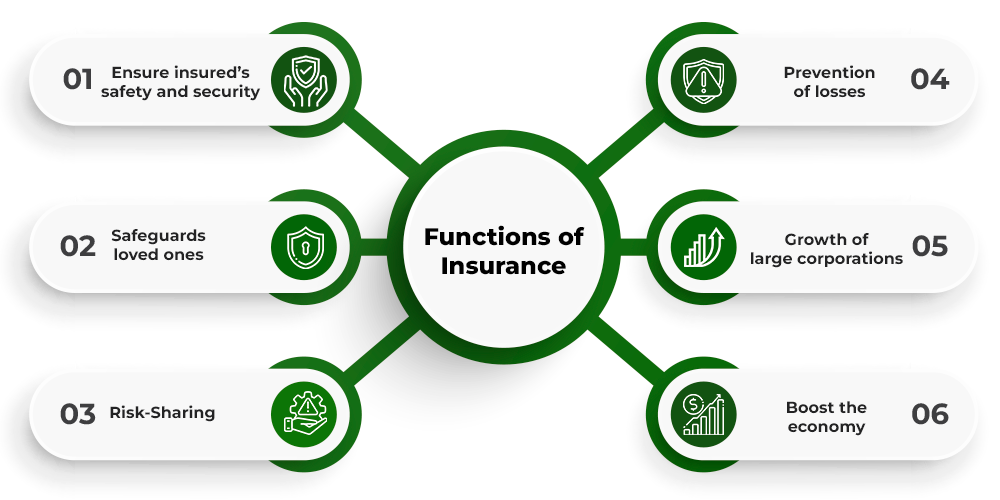Pacific Prime Can Be Fun For Everyone
Wiki Article
Everything about Pacific Prime
Table of ContentsSome Known Incorrect Statements About Pacific Prime Rumored Buzz on Pacific PrimeGetting My Pacific Prime To WorkThings about Pacific PrimeThe Facts About Pacific Prime Uncovered

This is because the data were collected for a duration of strong economic efficiency. Of the estimated 42 million individuals who were uninsured, all yet regarding 420,000 (about 1 percent) were under 65 years old, the age at which most Americans end up being eligible for Medicare; 32 million were grownups between ages 18 and 65, around 19 percent of all adults in this age team; and 10 million were kids under 18 years old, about 13.9 percent of all youngsters (Mills, 2000).
These quotes of the number of individuals without insurance are created from the annual March Supplement to the Present Populace Survey (CPS), conducted by the Census Bureau. Unless otherwise noted, nationwide price quotes of individuals without wellness insurance and proportions of the populace with various kinds of insurance coverage are based on the CPS, one of the most extensively utilized resource of estimates of insurance policy protection and uninsurance rates.
All about Pacific Prime

Still, the CPS is particularly useful due to the fact that it creates yearly price quotes relatively swiftly, reporting the previous year's insurance coverage approximates each September, and since it is the basis for a consistent set of estimates for greater than two decades, enabling analysis of trends in insurance coverage with time. For these factors, as well as the comprehensive use of the CPS in other research studies of insurance protection that exist in this report, we count on CPS price quotes, with limitations kept in mind.

The quote of the variety of uninsured individuals expands when a populace's insurance coverage condition is tracked for several years. Over a three-year duration beginning early in 1993, 72 million individuals, 29 percent of the united state population, were without insurance coverage for at least one month. Within a solitary year (1994 ), 53 million individuals experienced at the very least a month without coverage (Bennefield, 1998a)
6 out of every 10 uninsured grownups are themselves employed. Functioning does improve the possibility that one and one's family members will certainly have insurance coverage, it is not a warranty. Even participants of households with two full-time wage earners have almost a one-in-ten possibility of being without insurance (9.1 percent uninsured rate) (Hoffman and Pohl, 2000).
Pacific Prime Can Be Fun For Anyone
New immigrants make up a considerable proportion of individuals without health and wellness insurance coverage. One evaluation has associated a significant part of the current development in the dimension of the U.S. uninsured populace to immigrants who showed up in the country between 1994 and 1998 (Camarota and Edwards, 2000). Recent immigrants (those that concerned the United States within the previous four years) do have a high rate of being uninsured (46 percent), however they and their children account for just 6 percent of those without insurance policy nationally (Holahan et al., 2001).The relationship between medical insurance and access to care is well established, as documented later in this phase. The relationship in between health insurance and health results is neither straight nor simple, an extensive clinical and wellness solutions research study literary works web links health and wellness insurance policy coverage to enhanced accessibility to care, better top quality, and enhanced individual and population health and wellness condition.
Degrees of analysis for taking a look at the impacts of uninsurance. This conversation of health and wellness insurance protection focuses image source mostly on the U.S. population under age 65 since practically all Americans 65 and older have Medicare or other public coverage. It focuses particularly on those without any kind of health and wellness insurance coverage for any kind of length of time.
The 7-Second Trick For Pacific Prime
The issues dealt with by the underinsured are in some aspects similar to those faced by the uninsured, although they are generally less severe. Wellness insurance coverage, nonetheless, is neither required nor enough to get access to clinical services. The independent and straight effect of wellness insurance coverage on accessibility to wellness solutions is well established.
Others will get the healthcare they need even without medical insurance, by paying for it out of pocket or seeking it from companies that use treatment cost-free or at very subsidized prices. For still others, health insurance coverage alone does not make sure invoice of care as a result of various other nonfinancial barriers, such as an absence of health treatment carriers in their neighborhood, limited access to transport, illiteracy, or linguistic and cultural differences.
All about Pacific Prime
Formal research study concerning without insurance populations in the United States dates to the late 1920s and early 1930s when the Board on the Cost of Healthcare produced a collection of reports about financing doctor workplace visits and hospital stays. This concern ended up being significant as the numbers of medically indigent climbed up throughout the Great Anxiety.Report this wiki page